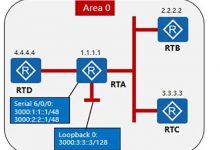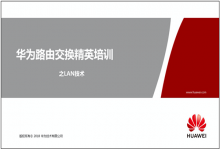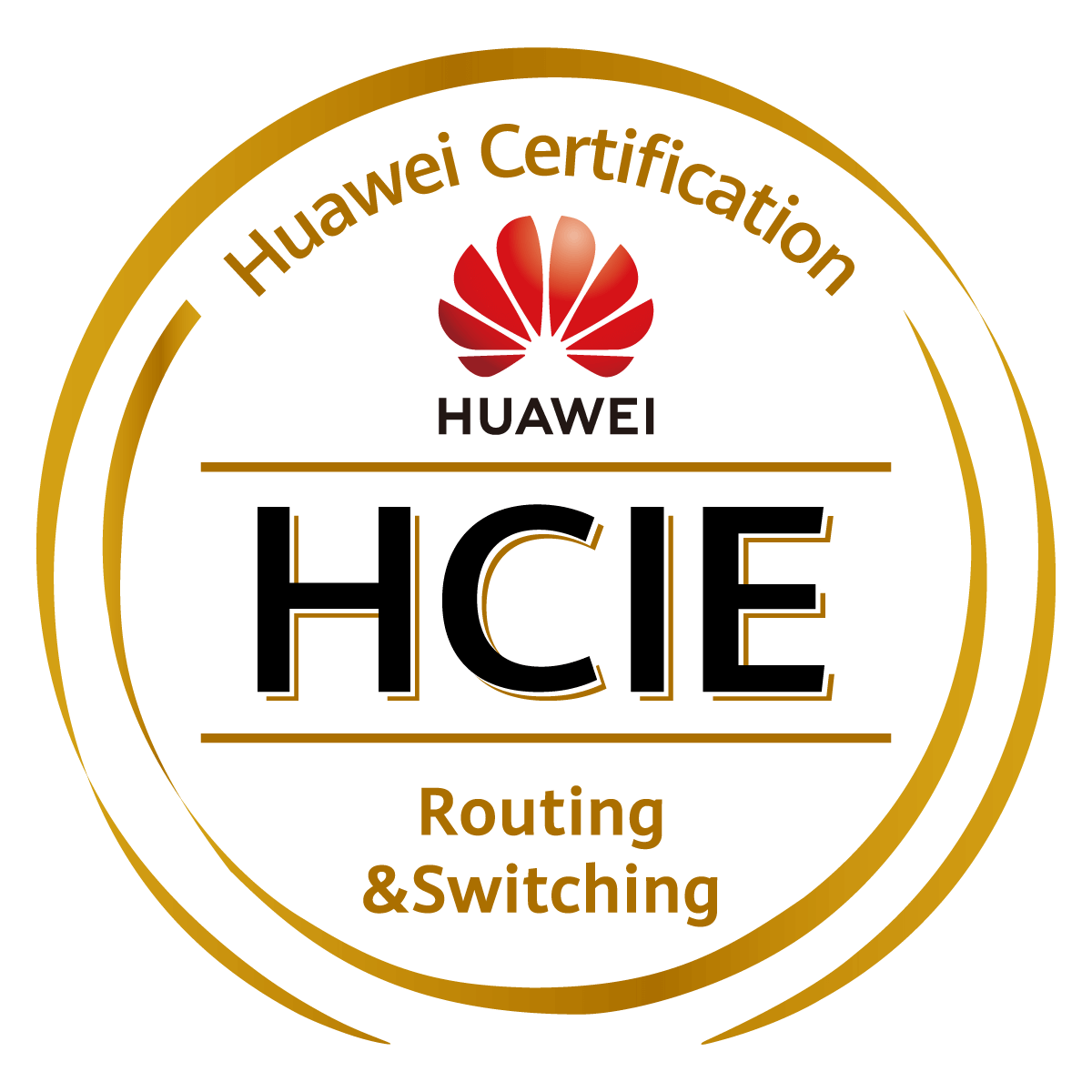1.华为HCIE-Routing&Switching V3.0认证考试
本文主要介绍HCIE-Routing & Switching V3.0考试大纲。

| 认证名称 | 考试代码 | 考试名称 | 考试语言 | 考试时长 | 通过分数 /总分 |
| HCIE- Routing&Switching | H12-261 | HCIE-Routing&Switching (Written) | Chinese Simplified/ English/Spanish-Modern/French | 90 min | 600/1000 |
| H12-262 | HCIE-Routing&Switching (LAB) | 480 min | 80/100 | ||
| H12-263 | HCIE-Routing&Switching (Interview) | 60 min | 通过/不通过 |
2. HCIE-Routing & Switching V3.0
2.1 考试内容
HCIE-Routing&Switching V3.0考试覆盖对企业网络的规划、设计、实施、维护、排障、优化、割接等。当前版本实验考试基于eNSP模拟器考试,软件版本号V100R002C00B500。
2.2 笔试知识点
2.2.1 Layer 2 Technologies(12%)
STP
1.STP
2.RSTP
3.MSTP
4.Loop guard
5.Root guard
6.BPDU guard
7.TC-BPDU attack guard
VLAN
1.Access port
2.Trunk port
3.Hybrid port
4.QinQ
5.Vlan Aggregation
6.Mux VLAN
7.Voice VLAN
Transparent bridge
1.Local Bridging
2.Remote Bridging
3.Integrated Bridging and Routing
4.VLAN ID Transparent Transmission
Link Aggregation, Eth-Trunk and IP-Trunk, Load-balance, LACP
1.Link Aggregation
2.LACP
Ethernet technologies
1.Speed and duplex
2.Ethernet, Fast Ethernet, Gigabit Ethernet, 10GE, 40GE,100GE
3.Auto MDI/MDIX
4.Auto negotiation
5.Storm control
6.Unicast flooding control
Smart link
DLDP
Switched Port Analyzer (port-mirroring)
CSS/iStack
HDLC/IP-Trunk and PPP/MP
PPPoE
2.2.2 IPv4/v6 Unicast(52%)
IPv4 addressing, subnetting, and VLSM
IPv4 tunneling and GRE
IPv6 addressing
ICMPv6
IPv6 functionality protocols
Migration techniques
1.Tunnelling techniques
2.Translation techniques
IPv4/v6 OSPF
1.Standard OSPF areas
2.Stub area
3.Totally stubby area
4.NSSA
5.Totally NSSA
6.LSA types
7.Adjacency on a point-to-point and on a multi-access network
8.Virtual-Link
9.LSA Filter
10.OSPF Fast Convergence
11.Stub Router
12.OSPF Authentication
IPv4/v6 IS-IS
1.NSAP
2.IS-IS Link-state packets
3.IS-IS area type
4.IS-IS circuit type
5.IS-IS TLV
6.IS-IS DIS and Pseudo node
7.IS-IS SPF
8.IS-IS LSP
9.IS-IS Metric
10.IS-IS Route Leaking
11.IS-IS MT
12.IS-IS Fast Convergence
13.IS-IS LDP Synchronization
14.IS-IS Authentication
IPv4/v6 BGP
1.IBGP and EBGP
2.BGP attributes
3.BGP synchronization
4.BGP routes Summarization
5.Route Dampening
6.BGP route reflector
7.BGP Community
8.BGP Peer Groups
9.BGP Security
10.Principles of Route Selection
Route Control
1.Filtering
2.IP Prefix list
3.Route Import(redistribution)
4.Route policy
5.Summarization
6.Preference
7.Other advanced features
2.2.3 MPLS VPN(10%)
MPLS
1.MPLS network component (P, PE, CE)
2.MPLS label format
3.MPLS label encapsulation
4.MPLS label stack
5.MPLS label operation
6.Forwarding Equivalence Class
7.LDP
8.Label advisement model
9.MPLS LDP—Local Label Allocation Filtering
10.MPLS LDP Inbound/outbound Label Binding Filtering
MPLS Layer 3 VPN
1.MP-IBGP VPNv4 peering
2.VPN-instance
3.Route Distinguisher
4.Route Target
5.Route Target import/export
6.PE-CE–Dynamic Routes
7.PE-CE–Static Routes
8.Redistributing PE-CE routes into VPNv4
9.Redistributing VPNv4 routes into PE-CE routing table
10.MCE
Inter-AS MPLS VPN
1.Option A
2.Option B
3.Option C
2.2.4 IPv4/v6 Multicast(6%)
1.Multicast distribution tree
2.Multicast forwarding
3.Multicast RPF
4.PIM sparse mode
5.IGMP/MLD
6.IGMP Snooping/MLD Snooping
7.PIM RP, and BSR
8.Multicast tools, features, and source-specific multicast
2.2.5 Network Security(5%)
Access lists
uRPF
IP Source Guard
AAA
802.1x / NAC
NAT
1.Static NAT/NAPT
2.Dynamic NAT/PAT
3.Easy IP
4.NAT Server
5.Twice NAT
6.ALG
7.NAT Mapping
8.NAT Filtering
Device access control
IPsec
Traffic Suppression
Local Attack Defense
IP Address Anti-spoofing
ARP Security
DHCP Security
2.2.6 QoS(5%)
1.Classification
2.Traffic Policing
3.Traffic Shaping
4.Congestion Avoidance
5.Congestion Management
2.2.7 Network Management(2%)
1.Syslog
2.IP Service Level Agreement SLA
3.NetStream
4.NQA
5.SNMP
6.FTP
7.Telnet
8.SSH
2.2.8 Features(3%)
1.VRRP
2.VGMP
3.Interface Backup
4.NTP
5.DHCP
6.BFD
7.NSF/GR
8.NSR
2.2.9 SDN(5%)
1.Strategy of SDN/NFV
2.SDN architecture
3.VXLAN
4.EVPN
2.3 实验考试知识点
2.3.1 Layer 2 Technologies(12%)
STP
1.STP
2.RSTP
3.MSTP
4.Loop guard
5.Root guard
6.BPDU guard
7.TC-BPDU attack guard
VLAN
1.Access port
2.Trunk port
3.Hybrid port
4.QinQ
5.Vlan Aggregation
6.Mux VLAN
7.Voice VLAN
Transparent bridge
1.Local Bridging
2.Remote Bridging
3.Integrated Bridging and Routing
4.VLAN ID Transparent Transmission
Link Aggregation, Eth-Trunk and IP-Trunk, Load-balance, LACP
1.Link Aggregation
2.LACP
Ethernet technologies
1.Speed and duplex
2.Ethernet, Fast Ethernet, Gigabit Ethernet, 10GE, 40GE, 100GE
3.Auto MDI/MDIX
4.Auto negotiation
5.Storm control
6.Unicast flooding control
Smart link
DLDP
Switched Port Analyzer (port-mirroring)
CSS/iStack
HDLC/IP-Trunk and PPP/MP
PPPoE
2.3.2 IPv4/v6 Unicast(47%)
IPv4 addressing, subnet, and VLSM
IPv4 tunneling and GRE
IPv6 addressing
ICMPv6
IPv6 functionality protocols
Migration techniques
1.Tunnelling techniques
2.Translation techniques
IPv4/v6 OSPF
1.Standard OSPF areas
2.Stub area
3.Totally stubby area
4.NSSA
5.Totally NSSA
6.LSA types
7.Adjacency on a point-to-point and on a multi-access network
8.Virtual-Link
9.LSA Filter
10.OSPF Fast Convergence
11.Stub Router
12.OSPF Authentication
IPv4/v6 IS-IS
1.NSAP
2.IS-IS Link-state packets
3.IS-IS area type
4.IS-IS circuit type
5.IS-IS TLV
6.IS-IS DIS and Pseudo node
7.IS-IS SPF
8.IS-IS LSP
9.IS-IS Metric
10.IS-IS Route Leaking
11.IS-IS MT
12.IS-IS Fast Convergence
13.IS-IS LDP Synchronization
14.IS-IS Authentication
IPv4/v6 BGP
1.IBGP and EBGP
2.BGP attributes
3.BGP synchronization
4.BGP routes Summarization
5.Route Dampening
6.BGP route reflector
7.BGP Community
8.BGP Peer Groups
9.BGP Security
10.Principles of Route Selection
Route Control
1.Filtering
2.IP Prefix list
3.Route Import(redistribution)
4.Route policy
5.Summarization
6.Preference
7.Other advanced features
2.3.3 MPLS VPN(26%)
MPLS
1.MPLS network component (P, PE, CE)
2.MPLS label format
3.MPLS label encapsulation
4.MPLS label stack
5.MPLS label operation
6.Forwarding Equivalence Class
7.LDP
8.Label advisement model
9.MPLS LDP—Local Label Allocation Filtering
10.MPLS LDP Inbound/outbound Label Binding Filtering
MPLS Layer 3 VPN
1.MP-IBGP VPNv4 peering
2.VPN-instance
3.Route Distinguisher
4.Route Target
5.Route Target import/export
6.PE-CE–Dynamic Routes
7.PE-CE–Static Routes
8.Redistributing PE-CE routes into VPNv4
9.Redistributing VPNv4 routes into PE-CE routing table
10.MCE
Inter-AS MPLS VPN
1.Option A
2.Option B
3.Option C
2.3.4 IPv4/v6 Multicast(4%)
1.Multicast distribution tree
2.Multicast forwarding
3.Multicast RPF
4.PIM sparse mode
5.IGMP/MLD
6.IGMP Snooping/MLD Snooping
7.PIM RP, and BSR
8.Multicast tools, features, and source-specific multicast
2.3.5 Network Security(2%)
Access lists
uRPF
IP Source Guard
AAA
802.1x / NAC
NAT
1.Static NAT/NAPT
2.Dynamic NAT/PAT
3.Easy IP
4.NAT Server
5.Twice NAT
6.ALG
7.NAT Mapping
8.NAT Filtering
Device access control
IPsec
Traffic Suppression
Local Attack Defense
IP Address Anti-spoofing
ARP Security
DHCP Security
2.3.6 QoS(7%)
1.Classification
2.Traffic Policing
3.Traffic Shaping
4.Congestion Avoidance
5.Congestion Management
2.3.7 Network Management(2%)
1.Syslog
2.IP Service Level Agreement SLA
3.NetStream
4.NQA
5.SNMP
6.FTP
7.Telnet
8.SSH
2.3.8 Feature(6%)
1.VRRP
2.VGMP
3.Interface Backup
4.NTP
5.DHCP
6.BFD
7.NSF/GR
8.NSR
2.4 面试知识点
2.4.1 Layer 2 Technologies(12%)
STP
1.STP
2.RSTP
3.MSTP
4.Loop guard
5.Root guard
6.BPDU guard
7.TC-BPDU attack guard
VLAN
1.Access port
2.Trunk port
3.Hybrid port
4.QinQ
5.Vlan Aggregation
6.Mux VLAN
7.Voice VLAN
Transparent bridge
1.Local Bridging
2.Remote Bridging
3.Integrated Bridging and Routing
4.VLAN ID Transparent Transmission
Link Aggregation, Eth-Trunk and IP-Trunk, Load-balance, LACP
1.Link Aggregation
2.LACP
Ethernet technologies
1.Speed and duplex
2.Ethernet, Fast Ethernet, Gigabit Ethernet, 10GE, 40GE,100GE
3.Auto MDI/MDIX
4.Auto negotiation
5.Storm control
6.Unicast flooding control
Smart link
DLDP
Switched Port Analyzer (port-mirroring)
CSS/iStack
HDLC/IP-Trunk and PPP/MP
PPPoE
2.4.2 IPv4/v6 Unicast(36%)
IPv4 addressing, subnetting, and VLSM
IPv4 tunneling and GRE
IPv6 addressing
ICMPv6
IPv6 functionality protocols
Migration techniques
1.Tunnelling techniques
2.Translation techniques
IPv4/v6 OSPF
1.Standard OSPF areas
2.Stub area
3.Totally stubby area
4.NSSA
5.Totally NSSA
6.LSA types
7.Adjacency on a point-to-point and on a multi-access network
8.Virtual-Link
9.LSA Filter
10.OSPF Fast Convergence
11.Stub Router
12.OSPF Authentication
IPv4/v6 IS-IS
1.NSAP
2.IS-IS Link-state packets
3.IS-IS area type
4.IS-IS circuit type
5.IS-IS TLV
6.IS-IS DIS and Pseudo node
7.IS-IS SPF
8.IS-IS LSP
9.IS-IS Metric
10.IS-IS Route Leaking
11.IS-IS MT
12.IS-IS Fast Convergence
13.IS-IS LDP Synchronization
14.IS-IS Authentication
IPv4/v6 BGP
1.IBGP and EBGP
2.BGP attributes
3.BGP synchronization
4.BGP routes Summarization
5.Route Dampening
6.BGP route reflector
7.BGP Community
8.BGP Peer Groups
9.BGP Security
10.Principles of Route Selection
Route Control
1.Filtering
2.IP Prefix list
3.Route Import(redistribution)
4.Route policy
5.Summarization
6.Preference
7.Other advanced features
2.4.3 MPLS VPN(28%)
MPLS
1.MPLS network component (P, PE, CE)
2.MPLS label format
3.MPLS label encapsulation
4.MPLS label stack
5.MPLS label operation
6.Forwarding Equivalence Class
7.LDP
8.Label advisement model
9.MPLS LDP—Local Label Allocation Filtering
10.MPLS LDP Inbound/outbound Label Binding Filtering
MPLS Layer 3 VPN
1.MP-IBGP VPNv4 peering
2.VPN-instance
3.Route Distinguisher
4.Route Target
5.Route Target import/export
6.PE-CE–Dynamic Routes
7.PE-CE–Static Routes
8.Redistributing PE-CE routes into VPNv4
9.Redistributing VPNv4 routes into PE-CE routing table
10.MCE
Inter-AS MPLS VPN
1.Option A
2.Option B
3.Option C
2.4.4 IPv4/v6 Multicast(4%)
1.Multicast distribution tree
2.Multicast forwarding
3.Multicast RPF
4.PIM sparse mode
5.IGMP/MLD
6.IGMP Snooping/MLD Snooping
7.PIM RP, and BSR
8.Multicast tools, features, and source-specific multicast
2.4.5 Network Security(3%)
Access lists
uRPF
IP Source Guard
AAA
802.1x / NAC
NAT
1.Static NAT/NAPT
2.Dynamic NAT/PAT
3.Easy IP
4.NAT Server
5.Twice NAT
6.ALG
7.NAT Mapping
8.NAT Filtering
Device access control
IPsec
Traffic Suppression
Local Attack Defense
IP Address Anti-spoofing
ARP Security
DHCP Security
2.4.6 QoS(6%)
1.Classification
2.Traffic Policing
3.Traffic Shaping
4.Congestion Avoidance
5.Congestion Management
2.4.7 Network Management(3%)
1.Syslog
2.IP Service Level Agreement SLA
3.NetStream
4.NQA
5.SNMP
6.FTP
7.Telnet
8.SSH
2.4.8 Features(6%)
1.VRRP
2.VGMP
3.Interface Backup
4.NTP
5.DHCP
6.BFD
7.NSF/GR
8.NSR
2.4.9 SDN(2%)
1.Strategy of SDN/NFV
2.SDN architecture
3.VXLAN
4.EVPN
请注意:
该考试大纲是对准备考试的考生在拥有多年实际工作经验的前提下进行备考时的补充。请注意这里列出的是HCIE- Routing&Switching V3.0的考试大纲,但不代表HCIE- Routing&Switching V3.0考试不能考查其他知识。该考试大纲代表了我们要求考生至少要掌握以上知识,但考生必须要能够熟练应用这些知识和相关知识点,才能通过HCIE- Routing&Switching V3.0的考核。所以其他知识点也可能存在于实际的考试中。我们欢迎得到您的建议和意见。您可以发送邮件给我们,Email:HCIE@huawei.com。
2.5参考书籍
HCIE-Routing&Switching V3.0培训教材
HCIE-Routing&Switching V3.0实验手册
华为产品文档
2.6推荐培训
HCIE-Routing & Switching V3.0华为路由交换专家认证培训
















